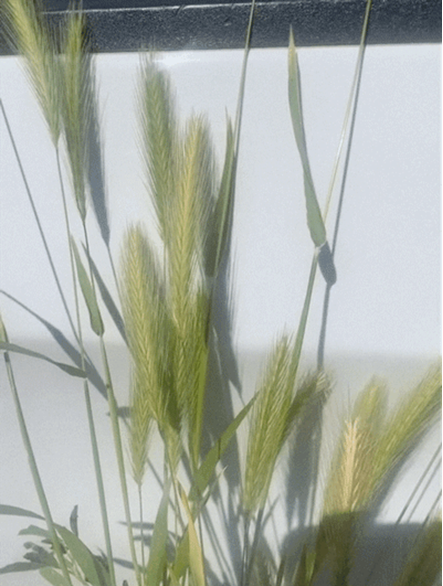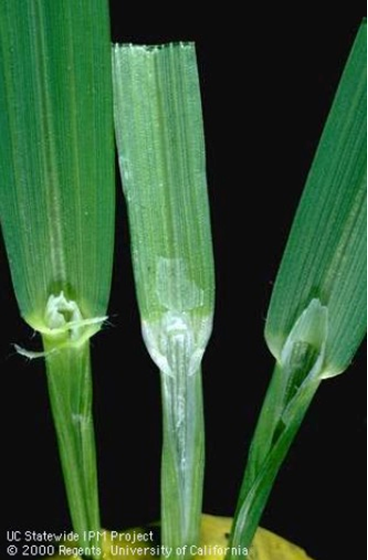
I am seeking samples of downy mildew on lettuce from around Yuma County to support the Michelmore Lab and their ongoing efforts to help characterize the downy mildew populations of the United States. The Michelmore Lab has led the charge on a survey of Bremia variants since 1980 and has been instrumental in demystifying the gene-for-gene nature of lettuce resistance to downy mildew.
Their group invites growers across the United States to submit downy mildew infected plant samples, which are then used to culture the Bremia on live host plants. The team then inoculates a panel of lettuce varieties carrying known resistance genes to determine the race of each isolate they receive. Identifying which races occur in which specific fields is essential to guiding the breeding of new resistant cultivars and maximizing the effectiveness of host-based genetic disease management. The data obtained from these tests are also used to designate new Bremia races through the International Bremia Evaluation Board.
Your contribution will help breed better lettuce for Yuma. This means less breakdown of resistance in the field, and better yields for Yuma growers. To facilitate these submissions the Yuma Plant Health Clinic will be setting up a separate drop-off point and submission sheet for downy mildew sample submissions in the same hallway we use for standard plant diagnostic submissions. The drop-off point will be clearly labelled and consist of a chest-style refrigerator and printed copies of the submission form. It is vital to keep these samples cool so they remain viable for future inoculations, so please place your samples inside of the refrigerator before you leave.
Shipping will be handled by the clinic. All we ask is that you fill out the submission form as completely as you can. An example of the questions that are asked in that form so you can prepare ahead of time can be found HERE .Over the last couple of years, we developed a prototype steam applicator for injecting steam into the soil prior to planting. The concept behind soil steaming is similar to soil solarization - heat the soil to levels sufficient to kill soilborne pathogens and weed seeds (typically 140 °F > 20 minutes). The device is principally comprised of a 63 BHP steam generator mounted on an elongated bed shaper (Fig. 1). The apparatus applies steam via shank injection and from rectangular ports on top of the bed shaper. After cooling (< ½ a day), the crop is planted into the disinfested soil.
Trial results have been very promising and reported in previous UA Veg IPM articles. In brief, the multi-year studies have shown that soil steaming provides excellent weed control (>90%), suppresses problematic soilborne diseases (Fusarium wilt of lettuce> 50%, lettuce drop > 70%) and increases crop yields (>24%).
This season, we would like to demonstrate the technique to interested growers. In addition to obtaining grower feedback on the viability of soil steaming, a second objective would be to validate our small plot research results at the field scale level. The machine can be adjusted to work with most bed configurations including 40”, 42”, 80” and 84” beds, and work with any crop, including organic crops (soil steaming is organically compliant). So far, the device has been successfully tested in iceberg lettuce, romaine, baby leaf spinach and carrot crops.
If you are interested in an on-farm demo of soil steaming, please let me know. I’d be happy to work with you.
Fig. 1. a) Band-steam applicator principally comprising a 63 BHP steam generator
mounted on a bed-shaper applicator sled. Steam applicator sled b) top view and
c) bottom view. Click here or on the image above to see the device in action.

Image by: Jim Daily
Hare Barley, Mediterranean, or Wild Barley (Hordeum murinum) has been increasing at the Yuma AZ Valley and the Mesa. This week we have received some samples for ID from our friend PCAs.
It’s a cool season annual grass native to Europe with dense stiff awned spikes. Early in the season before the flower spikes develop, they can be a very good forage but when the spikes emerge can injure the mouths, eyes, nasal passages, ears, and skin of animals.
It is found throughout California up to 3300 feet (1000 m) and inhabits agricultural land, disturbed sites, and unmanaged natural areas3. The seedheads are unbranched, awned, stems and leaves are hairless, and the ligules are membranous. The collar region and auricles can be seen in the image below from the University of CA3.
The Hordeum murinum complex is the most widespread of all the other Hordeum species, and the origin of its distribution of was Central Europe, the Mediterranean area, North Africa, and Western Asia1.

Collar region of (left to right) hare (wild) barley, wheat, and wild oat.
Photo by Jack Kelly Clark3.
References: